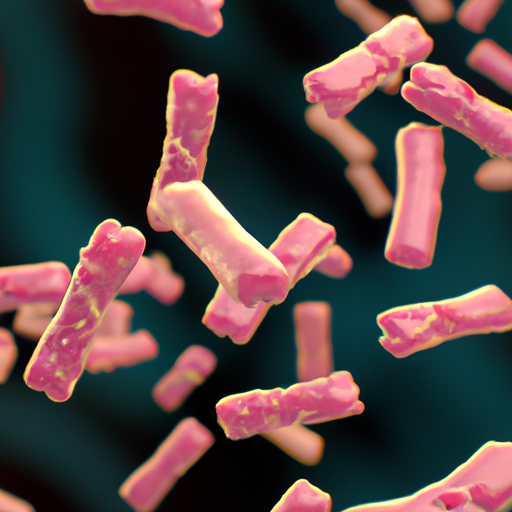Klippel-Trenaunay Syndrome is a rare congenital disorder characterized by varicose veins, port-wine stains, disproportionate growth of limbs, skin and bone abnormalities, blood clots, and lymphatic abnormalities. This condition affects the development of blood vessels, leading to various physical manifestations. Understanding the symptoms, causes, and potential treatment options for Klippel-Trenaunay Syndrome is crucial for individuals diagnosed with this condition and their caregivers.
Varicose Veins: Twisted and Enlarged Veins
One of the primary symptoms of Klippel-Trenaunay Syndrome is the presence of varicose veins. Varicose veins are twisted and enlarged veins that usually appear on the legs, although they can occur in other parts of the body as well. These veins may be blue or purple in color and can cause discomfort, pain, and swelling. The abnormal development of blood vessels in Klippel-Trenaunay Syndrome leads to the formation of varicose veins, which can significantly impact an individual’s quality of life.
Port-Wine Stains: Red or Purple Birthmarks
Port-wine stains are another characteristic feature of Klippel-Trenaunay Syndrome. These birthmarks are typically red or purple in color and can vary in size and shape. Port-wine stains are caused by an overgrowth of blood vessels in the affected area. While they are generally harmless, port-wine stains can be a source of emotional distress for individuals, especially if they are located on visible parts of the body such as the face or neck.
Disproportionate Growth of Limbs: Asymmetry and Overgrowth
Klippel-Trenaunay Syndrome often leads to the disproportionate growth of limbs. This means that one limb may be larger or longer than the corresponding limb on the other side of the body. The overgrowth can affect the bones, muscles, and soft tissues, resulting in asymmetry and functional limitations. The exact cause of this disproportionate growth is not fully understood, but it is believed to be related to the abnormal development of blood vessels and tissues in the affected area.
Skin and Bone Abnormalities: Thickened Skin and Bone Overgrowth
In addition to the disproportionate growth of limbs, individuals with Klippel-Trenaunay Syndrome may also experience skin and bone abnormalities. The skin in the affected area may become thickened, leading to a rough or pebbled texture. Bone overgrowth can also occur, causing deformities and functional impairments. These abnormalities can further contribute to the physical and psychological challenges faced by individuals with this condition.
Blood Clots: Increased Risk and Potential Complications
Individuals with Klippel-Trenaunay Syndrome have an increased risk of developing blood clots. Blood clots can form within the varicose veins or deep veins, leading to potentially serious complications such as deep vein thrombosis or pulmonary embolism. It is essential for individuals with this condition to be aware of the signs and symptoms of blood clots and seek medical attention promptly if they suspect a clot.
Lymphatic Abnormalities: Swelling and Lymphedema
Klippel-Trenaunay Syndrome can also affect the lymphatic system, leading to lymphatic abnormalities. Lymphatic vessels may be underdeveloped or malformed, resulting in impaired drainage of lymph fluid. This can cause swelling in the affected limb, known as lymphedema. Lymphedema can be uncomfortable and may increase the risk of infection. Proper management and treatment of lymphedema are crucial to minimize its impact on daily life.
Treatment Options and Management Strategies
While there is no cure for Klippel-Trenaunay Syndrome, various treatment options and management strategies can help alleviate symptoms and improve quality of life. The specific approach will depend on the individual’s unique needs and the severity of their condition. Some common treatment options include:
- Compression therapy: Wearing compression garments or bandages can help reduce swelling and improve blood flow.
- Surgical interventions: In some cases, surgery may be recommended to address specific complications such as varicose veins or bone abnormalities.
- Physical therapy: Physical therapy exercises can help improve strength, mobility, and overall function.
- Pain management: Medications or other pain management techniques may be prescribed to alleviate discomfort.
- Psychological support: Living with Klippel-Trenaunay Syndrome can be challenging, and individuals may benefit from counseling or support groups to cope with emotional and psychological aspects of the condition.
It is important for individuals with Klippel-Trenaunay Syndrome to work closely with a healthcare team to develop a personalized treatment plan that addresses their specific needs and goals.
Living with Klippel-Trenaunay Syndrome: Coping and Support
Living with Klippel-Trenaunay Syndrome can present unique challenges, both physically and emotionally. It is essential for individuals with this condition to have a strong support system in place. Connecting with other individuals and families affected by Klippel-Trenaunay Syndrome through support groups or online communities can provide valuable insights, advice, and emotional support.
Additionally, maintaining a healthy lifestyle, including regular exercise, a balanced diet, and proper self-care, can help manage symptoms and improve overall well-being. It is also crucial to stay informed about the latest research and treatment options for Klippel-Trenaunay Syndrome, as advancements in medical science may offer new hope and possibilities for individuals with this condition.
In Conclusion
Klippel-Trenaunay Syndrome is a complex and rare condition that affects the development of blood vessels, leading to varicose veins, port-wine stains, disproportionate growth of limbs, skin and bone abnormalities, blood clots, and lymphatic abnormalities. While there is no cure, individuals with this condition can benefit from various treatment options and management strategies to alleviate symptoms and improve their quality of life. By staying informed, seeking support, and working closely with healthcare professionals, individuals with Klippel-Trenaunay Syndrome can navigate the challenges of this condition and lead fulfilling lives.








